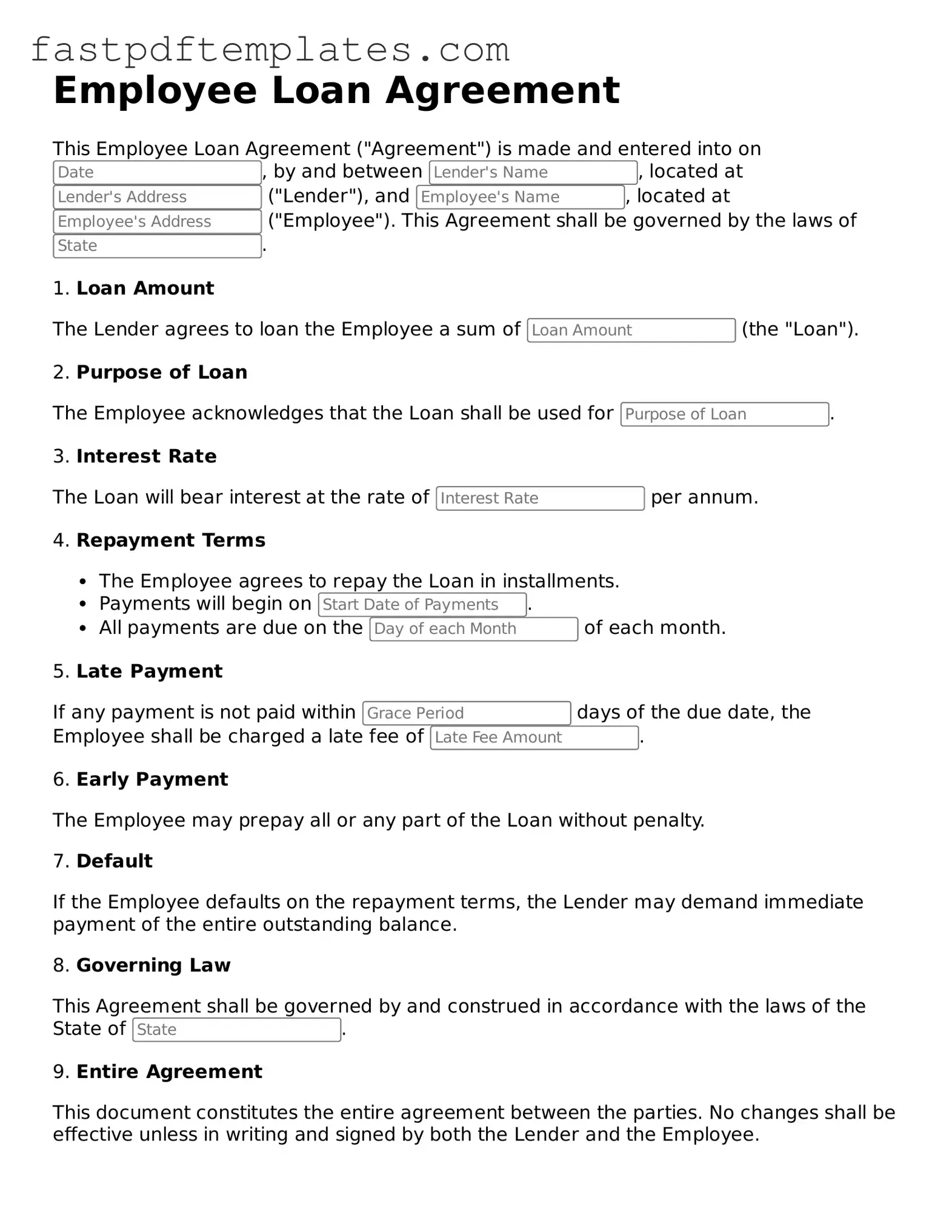The Employee Loan Agreement form shares similarities with a Personal Loan Agreement. Both documents outline the terms under which a borrower receives funds from a lender. They typically include details such as the loan amount, interest rate, repayment schedule, and any collateral involved. The language used in both agreements is straightforward, ensuring that both parties understand their obligations and rights. In essence, both forms serve to protect the interests of the lender while providing clear guidelines for the borrower.
Another document akin to the Employee Loan Agreement is the Promissory Note. This document is a written promise from the borrower to repay a specified amount to the lender under agreed-upon terms. Like the Employee Loan Agreement, it includes essential details such as the loan amount, interest rate, and repayment schedule. However, a Promissory Note is often simpler and may not include as many terms and conditions as the Employee Loan Agreement, focusing primarily on the borrower's commitment to repay the loan.
The Loan Application form also bears similarities to the Employee Loan Agreement. This document is typically completed by the borrower to provide the lender with necessary information to assess creditworthiness. Both forms require personal and financial details, although the Loan Application focuses more on the borrower's background and financial history. Once approved, the Loan Application leads to the drafting of the Employee Loan Agreement, which formalizes the terms of the loan.
A Credit Agreement is another document that aligns closely with the Employee Loan Agreement. This agreement outlines the terms of a credit arrangement, including the amount of credit extended, the interest rate, and the repayment terms. While the Employee Loan Agreement is specific to loans made by an employer to an employee, a Credit Agreement can apply to various lenders and borrowers. Both documents aim to clarify the expectations and responsibilities of each party involved.
Similar to the Employee Loan Agreement is the Mortgage Agreement. While typically used in real estate transactions, a Mortgage Agreement details the terms under which a borrower secures a loan against property. Like the Employee Loan Agreement, it includes information about the loan amount, interest rate, and repayment schedule. Both documents serve to protect the lender’s investment and ensure that the borrower understands their obligations regarding repayment.
The Installment Loan Agreement is yet another document comparable to the Employee Loan Agreement. This type of agreement specifies the terms for a loan that is repaid in regular installments over a set period. Like the Employee Loan Agreement, it outlines the loan amount, interest rate, and repayment schedule, ensuring that both parties are aware of their commitments. The structured repayment plan is a common feature in both documents, promoting clarity and accountability.
A Lease Agreement can also be seen as similar to the Employee Loan Agreement in terms of structure and purpose. While it primarily pertains to the rental of property, a Lease Agreement outlines the terms under which one party can use another party's property in exchange for payment. Both documents include essential details such as payment terms, duration, and responsibilities of each party. The clear delineation of expectations serves to protect both the lender and the borrower in their respective agreements.
Lastly, the Service Agreement is comparable to the Employee Loan Agreement in that it establishes the terms of a contractual relationship between two parties. While a Service Agreement typically outlines the provision of services rather than a loan, it includes key elements such as payment terms, duration, and responsibilities. Both documents aim to provide clarity and protect the interests of all parties involved, ensuring that expectations are met and obligations fulfilled.
